Synopsis
This video provides an overview of how the masses of subatomic particles are used to calculate atomic masses. It then explains Relative Atomic Mass using chlorine isotopes as an example, followed by an introduction to formula masses, mole calculations, and percentage mass. The video concludes with discussions on the conservation of mass and atom economy. Given its fast pace, the content is likely better suited for revision rather than introducing these concepts.
- Programme: GCSE Bitesize Revision
- Episode: Additional Science 2
- Channel: BBC Two
- Broadcast year: 2010
- Science
Licence: ERA Licence required
UK only
Staff and students of licensed education establishments only
Cannot be adapted
Add Notes
More clips from GCSE Bitesize Revision

Alternating and direct current | Additional Science 2
Alternating and direct current | Additional Science 2
Spec references J249: P8.2h J250: P6.2g. Alternating and direct current. Description and animation.

Attraction and repulsion | Additional Science 2
Attraction and repulsion | Additional Science 2
Spec references J249: P3.1b J250: P3.1b. Attraction and repulsion between objects ( charging by induction not addressed) - an...
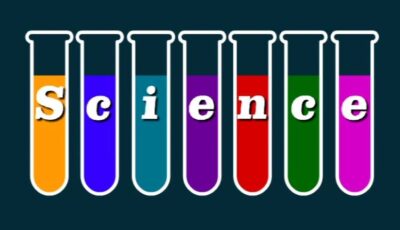
Biological compounds | GCSE Bitesize Revision
Biological compounds | GCSE Bitesize Revision
Animated shorts to support students preparing for assessments in GCSE Additional Science.

Chemical Calculations (J250) | GCSE Bitesize Revision
Chemical Calculations (J250) | GCSE Bitesize Revision
Spec references J250: C2.1. This video provides an overview of how the masses of subatomic particles are used to calcul...

Dangers and nuisance of electrostatics | Additional Science 2
Dangers and nuisance of electrostatics | Additional Science 2
Spec references J249: P3.1c J250: P3.1c. Discharging charged objects and dangers nuisance of static electricity...

Electrolysis | GCSE Bitesize Revision
Electrolysis | GCSE Bitesize Revision
Spec references J248: C3.4a, C3.4b, C3.4c, C3.4d, C3.4e J250: C3.4a, C3.4b, C3.4c, C3.4d, C3.4e. Explanation of how ionic substances ca...
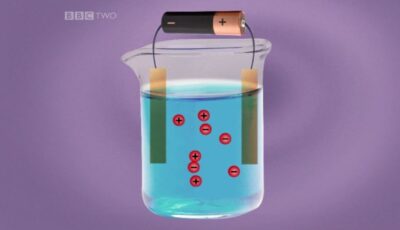
Electrolysis 2 | GCSE Bitesize Revision
Electrolysis 2 | GCSE Bitesize Revision
Spec references J248: C3.4a, C3.4b, C3.4c, C3.4d, C3.4e J250: C3.4a, C3.4b, C3.4c, C3.4d, C3.4e. Explanation of how ionic substances ...

Electrostatics | GCSE Bitesize Revision
Electrostatics | GCSE Bitesize Revision
Animated shorts to support students preparing for assessments in GCSE Additional Science.

Force arrows and balanced forces | Additional Science 2
Force arrows and balanced forces | Additional Science 2
Spec references J249: P2.2c, P2.2d, P2.2f J250: P2.2c, P2.2d, P2.2f. Force arrows and balanced forces - animation and...

Force, mass and acceleration | Additional Science 2
Force, mass and acceleration | Additional Science 2
Spec references J249: P2.2i, P2.2l J250: P2.2i. Effect of force and mass on acceleration. F = m a. Worked example. Animat...

Forces and moving objects | Additional Science 2
Forces and moving objects | Additional Science 2
Spec references J249: P2.2a, P2.2b, P2.3h J250: P2.2a, P2.2b, P2.3h. Clear description and explanation of types of force aff...

Forces when falling and terminal velocity | Additional Science 2
Forces when falling and terminal velocity | Additional Science 2
Spec references J249: P2.2f, P2.2h J250: P2.2f, P2.2h. Falling, air resistance, balanced forces and terminal...

Inheritance | GCSE Bitesize Revision
Inheritance | GCSE Bitesize Revision
Spec references J247: B5.1i, B5.1j J250: B5.1g, B5.1h. Summary of inheritance including: dominant and recessive alleles, genetic diagram...

Light and sound waves | GCSE Bitesize Revision
Light and sound waves | GCSE Bitesize Revision
Animated shorts to support students preparing for assessments in GCSE Additional Science.

Mains electricity 2 | GCSE Bitesize Revision
Mains electricity 2 | GCSE Bitesize Revision
Animated shorts to support students preparing for assessments in GCSE Additional Science.

Memory | GCSE Bitesize Revision
Memory | GCSE Bitesize Revision
Animated shorts to support students preparing for assessments in GCSE Additional Science.

Nuclear fission | Additional Science 2
Nuclear fission | Additional Science 2
Spec references J249: P6.2. Description and animation of nuclear fission.

Nuclear fission and fusion | GCSE Bitesize Revision
Nuclear fission and fusion | GCSE Bitesize Revision
Animated shorts to support students preparing for assessments in GCSE Additional Science.

Nuclear fusion | Additional Science 2
Nuclear fusion | Additional Science 2
Spec references J249: P6.2. Description and animation of nuclear fusion.

Parallel and series circuits | GCSE Bitesize Revision
Parallel and series circuits | GCSE Bitesize Revision
Spec references J249: P3.1e, P3.1f, P3.2a, P3.2b J250: P3.1d, P3.1e, P3.2a, P3.2b. Circuit symbols, differences between...
More resources about Chemistry

2: The Order of the Elements | Chemistry: A Volatile History
2: The Order of the Elements | Chemistry: A Volatile History
Professor Jim Al-Khalili looks at how the early scientists' bid to decode the order of the elements was driven b...

1: Discovering the Elements | Chemistry: A Volatile History
1: Discovering the Elements | Chemistry: A Volatile History
The story of how the elements were discovered and mapped begins with the alchemists who questioned that the world...
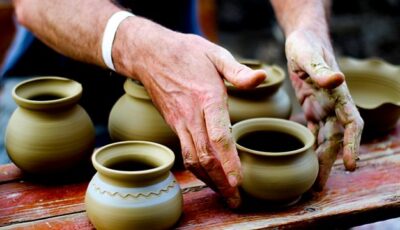
Ceramics | How It Works
Ceramics | How It Works
Professor Mark Miodownik looks at how simple clay, sand and rock can be changed into pottery, glass and concrete to build cities and transform the wa...
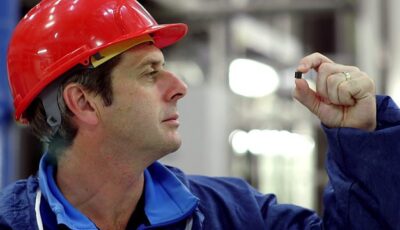
Episode 3 | Planet Oil: The Treasure That Conquered The World
Episode 3 | Planet Oil: The Treasure That Conquered The World
Professor Iain Stewart examines the situation in the 21st century, at which point the global consumption of oil...

Carbon capture and storage | Planet Oil: The Treasure That Conquered the World
Carbon capture and storage | Planet Oil: The Treasure That Conquered the World
Professor Iain Stewart investigates CCS, a process that is attempting to reduce carbon dioxide...
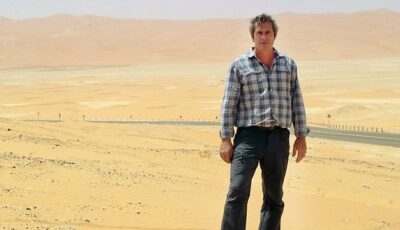
Episode 1 | Planet Oil: The Treasure That Conquered The World
Episode 1 | Planet Oil: The Treasure That Conquered The World
From the moment we first drilled for oil, we opened a Pandora's box that changed the world forever. It transfor...

Metal | How It Works
Metal | How It Works
Mark Miodownik traces the history of our love affair with metal. He investigates metals at the atomic level and sees how metal crystals can be grown to ...

Periodic Table Overview | Chemistry: A Volatile History
Periodic Table Overview | Chemistry: A Volatile History
Spec references J248: C2.2i J250: C2.2i. A quick recap of how the periodic table is arranged including groups, period...
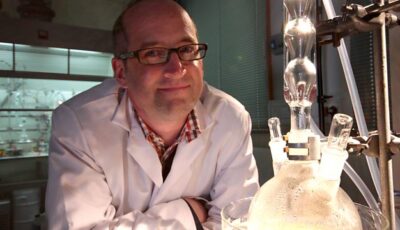
Plastic | How It Works
Plastic | How It Works
Mark Miodownik shows how plastics have brought luxury to the masses and reveals how the next generation will take its inspiration from nature and coul...

Sustainable cities | Planet Oil: The Treasure That Conquered the World
Sustainable cities | Planet Oil: The Treasure That Conquered the World
Professor Iain Stewart visits Masdar in Abu Dhabi, a city that relies on renewable energy.

Types of Compounds | Curriculum Bites
Types of Compounds | Curriculum Bites
Spec references J248: C2.2h J250: C2.2h. An introduction to how elements react to form ionic and covalent compounds, with reference to ...

3: The Power of the Elements | Chemistry: A Volatile History
3: The Power of the Elements | Chemistry: A Volatile History
Jim Al-Khalili reveals the breakthroughs which harnessed elements' ability to release vast power, showing how sc...

Climate refugees | Black Black Oil
Climate refugees | Black Black Oil
Hundreds of millions of people are expected to migrate from their countries by 2050 due to rising sea levels.
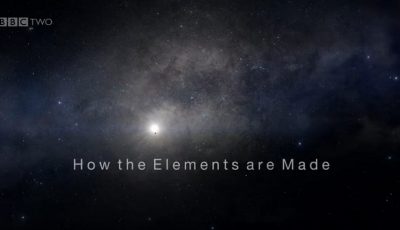
How are elements made? | Wonders of the Universe
How are elements made? | Wonders of the Universe
Brian Cox explains what elements are and how they are formed, including the importance of carbon.

Periodic Table | Short Circuit
Periodic Table | Short Circuit
Bringing chemistry, physics and biology to life using real-life examples, 3D graphics and practical experiments.

Production of Plastic from Crude Oil | Real World Chemistry
Production of Plastic from Crude Oil | Real World Chemistry
Spec references J248: C6.2m, C6.2n, C6.2o J250: C6.1k, C6.1l, C6.1m. This clip demonstrates how plastic is produc...

Biological Catalysts | Science Topics
Biological Catalysts | Science Topics
The video provides examples of biological catalysis, such as enzyme use in cheese production and human digestion, followed by an explan...

Carbon dioxide and climate change | Royal Institution Christmas Lectures
Carbon dioxide and climate change | Royal Institution Christmas Lectures
Dr Tara Shine demonstrates how increased burning of fossil fuels since the industrial revolution pro...
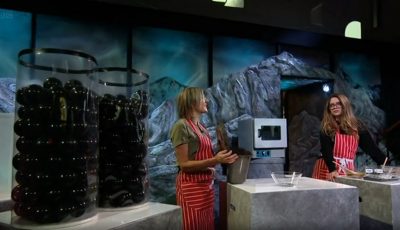
Carbon footprint of a loaf of bread | Royal Institution Christmas Lectures
Carbon footprint of a loaf of bread | Royal Institution Christmas Lectures
Dr Tara Shine discusses the carbon emissions from the process of baking a loaf of bread.

Episode 2 | Planet Oil: The Treasure That Conquered The World
Episode 2 | Planet Oil: The Treasure That Conquered The World
Professor Iain Stewart looks back at the 1950s, a time when the oil and gas fields of the Middle East became a ...
